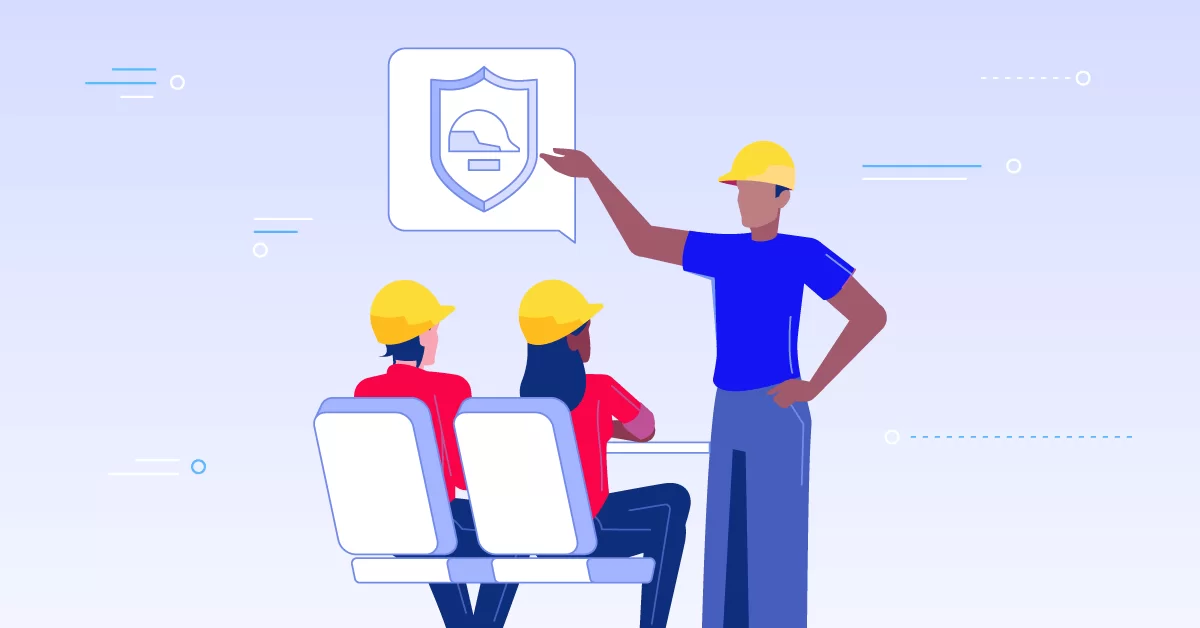In 2021 there were 92 million registered online learners worldwide! The US is the leader, bringing 17.3 million individual learners to the total sum.
Before we dive into how exactly to spark motivation for online training, let’s quickly establish the pillars of eLearning programs, especially for maintenance. They include:
- Providing actionable skills
- Systematically documented and easily accessible courses
- Continuous effort—not one-off events
- Working with industry leaders
- Clearly defined outcomes
If done right—and defined clearly—the basics of a solid, well-thought-out maintenance training program can easily translate into motivating factors for course candidates.
But what will your staff see as the most important benefits of online training on their end?
The primary personnel perk of online training is the flexible hours to do their training (if it’s not a live session).
Also, the materials used in most online training scenarios are a lot more interactive than traditional textbooks.
Finally, geography is no longer a barrier to working with—and learning from—the leading experts in the field, which is another major benefit.
But, aside from the benefits, how can we engage maintenance technicians during eLearning? Here are five ways to boost motivation for online training.
Strategy #1: Mix eLearning with live training
If transitioning to online training is a challenge, don’t be exclusive. Hands-on experience is especially valuable for maintenance teams, so an easy fix for low engagement is combining online learning and hands-on training.
Give trainees the liberty to study materials online, at their convenience. At the same time, organize on-the-job training to complement the theory. Job shadowing schemes are especially convenient for such course design.
By doing so, you’ll not only bridge a skill gap in your team, but create a way to gather and systematize the knowledge the older techs have, but are reluctant to structure into digital content.
Also, understand that candidates investing their (free or work) time into a learning course will want to walk away with tangible results. Maintenance crews are a top consideration here.
Strategy #2: Clearly define outcomes and their benefits
Clearly defined outcomes make online training flow easily toward a final goal. Various certificates will make candidates more willing to invest their time in learning courses.
A great way to increase motivation for online training is to structure your courses to lead to (or prepare for) a relevant certification. This provides a tangible, very useful outcome that can be clearly defined. These are mostly off-the-shelf courses with low customizability.
You should clearly communicate how the certification will benefit workers, and how will this new knowledge contribute to improving job operations. You should also clearly state at which point the certification becomes free to use as a qualification outside of your company.
Some companies set up contracts defining how long after the course the worker must remain with the company; if they part ways earlier, the contracts stipulate the required course compensation.
Strategy #3: Connect your staff with industry leaders
With no mileage barriers for accessing industry leaders, your workers can benefit from doing online training with such experts. 1-on-1 time with them easily translates into know-how, especially in fields such as maintenance—which requires previous experience and actionable, real-life tips.
Since physical distance is no longer a hurdle to working with people from all over the world, your teams get to talk and network with industry peers from around the world. This is especially useful when onboarding new SaaS providers and doing the training they require.
The fact that there’s no need to travel for such events when learning is done online lowers costs for employers. Conference calls can also enable attendees to see the trainer’s facility or lab, providing further insight into best practices.
The best thing about such scenarios is that they, by nature, require both the trainers and the trainees to ditch the traditional textbooks, and come up with engaging, interactive materials that can capture the candidates’ attention.
Strategy #4: Provide easy access to training materials
This is where online training and Learning Management Systems (LMS) take the spotlight from traditional training.
An LMS fits into the entire scheme perfectly. All stakeholders have access to the programs and progress, and everything can be easily monitored. It doesn’t hurt to remind ourselves this wasn’t always the case with traditional courses.
A robust LMS will accommodate highly customized training programs as well, to be both monitored and executed seamlessly. When it comes to trainees, they can get immediate feedback on test results if these are integrated into the system.
Progress visibility, and material availability, 24/7, are just one example of how tech that was developed to address a new problem also took care of some other underlying issues.
Strategy #5: Don’t eat away too much of their time
Finally, online training will go easy on the one thing workers value the most these days—their time. Taking all of the above into account, it’s easy to see that the training can (in most cases) be done at their convenience, with the exception of live sessions.
Not only does it mean that your maintenance teams won’t be away from work, but it also means they won’t be away from home as much. And this is becoming increasingly important for the newer generations of employees.
Communicate transparently with your maintenance staff and explain to them how much time you expect them to spend on the training. Think about their work-life balance and show them you care by allowing them flexibility.

Making the case for in-person training?
Regardless of the above benefits, a case can be made for traditional, in-person training.
One of the most frequently considered factors doesn’t necessarily have to do with the learning process itself but is considered a major benefit of attending live sessions—networking. A room full of peers, led by an industry expert, is a great place to make new acquaintances and lay the groundwork for future partnerships.
A lack of a hands-on approach is another thing that’s often cited as a downside of online training. However, this can be remedied by combining online and in-person training (e.g., covering theory online.) There have also been major advances in how online learning providers do their simulation training.
It’s clear that the labor market has changed in a number of ways. With the growth in remote work opportunities come immediate consequences, such as improved talent accessibility for employers, but also an increase in competitiveness for workers. This necessity to navigate an increasingly complex market is one of the major factors for online training growth.
Employers often point out one obvious perk of online training—cost reduction: no travel and accommodation expenses, no hidden or added costs. On top of that, they improve their staff availability if workers don’t need to travel and be away from their job for prolonged periods of time. If done in-house, online training means companies don’t need a dedicated space to hold training sessions.
All of the above also means your in-house training should make a turn towards online-based learning. With the benefits many candidates are reaping from this approach, it makes perfect sense to ensure your staff also gets the best possible learning outcomes.
Key takeaways
The strategies used to motivate your maintenance teams for online training mirror the ones used for any type of online training—up to a point.
A major takeaway is that a solid course structure practically boosts motivation for online training.
Most people like to see the structure and clearly defined outcomes, and enabling them to follow through on their own schedule is a win-win situation for all stakeholders.
About the author: Bryan Christiansen is the founder and CEO of Limble CMMS. Limble is a modern, easy-to-use mobile CMMS software that takes the stress and chaos out of maintenance by helping managers organize, automate, and streamline their maintenance operations.



